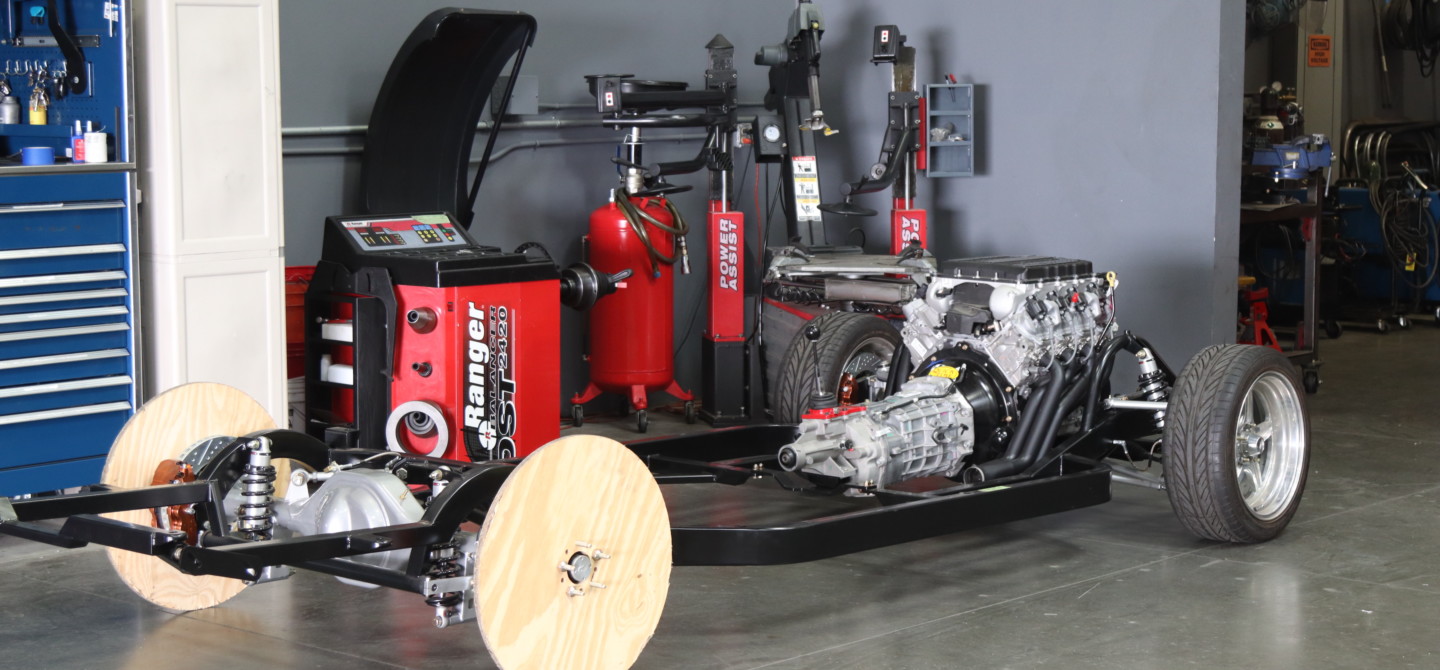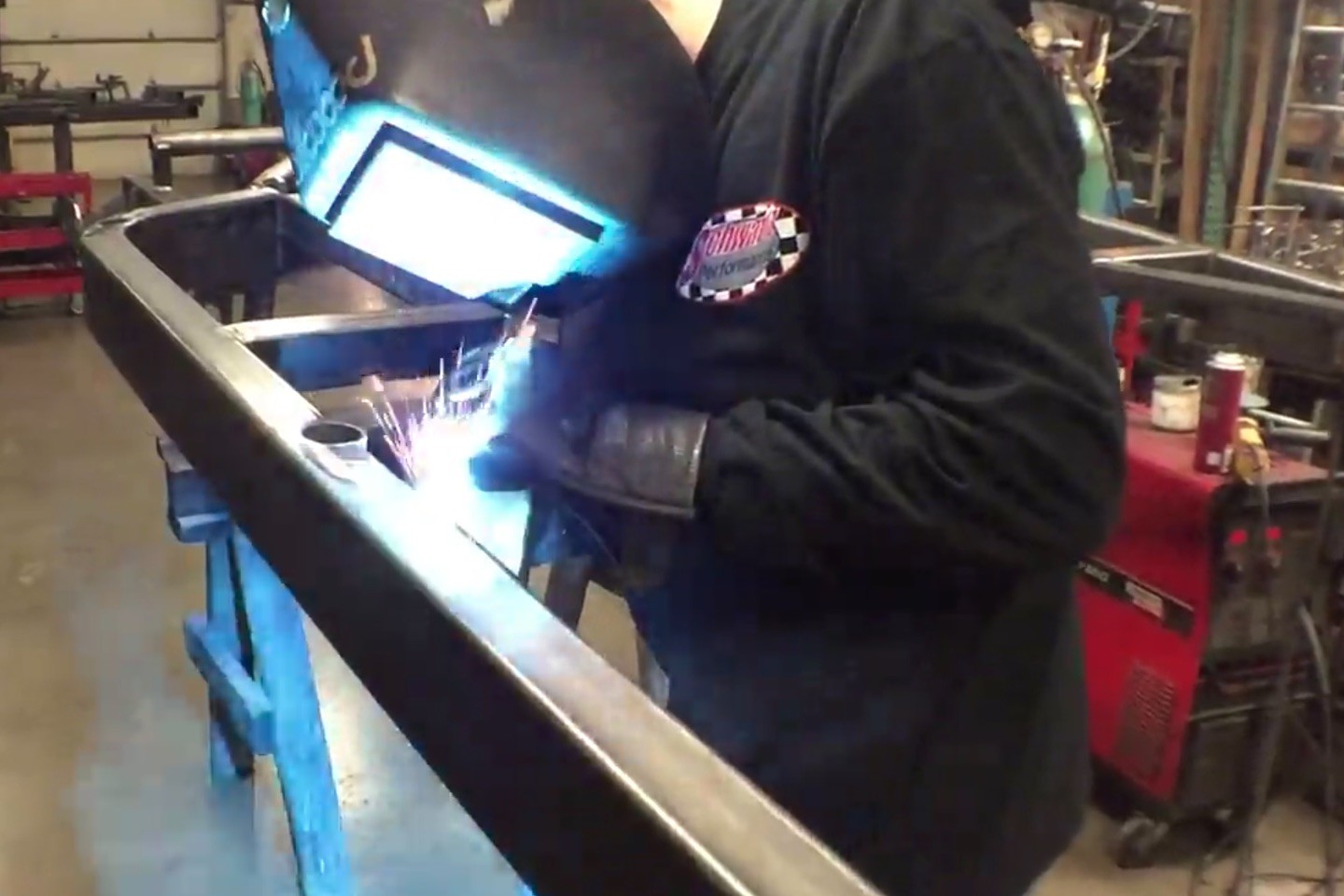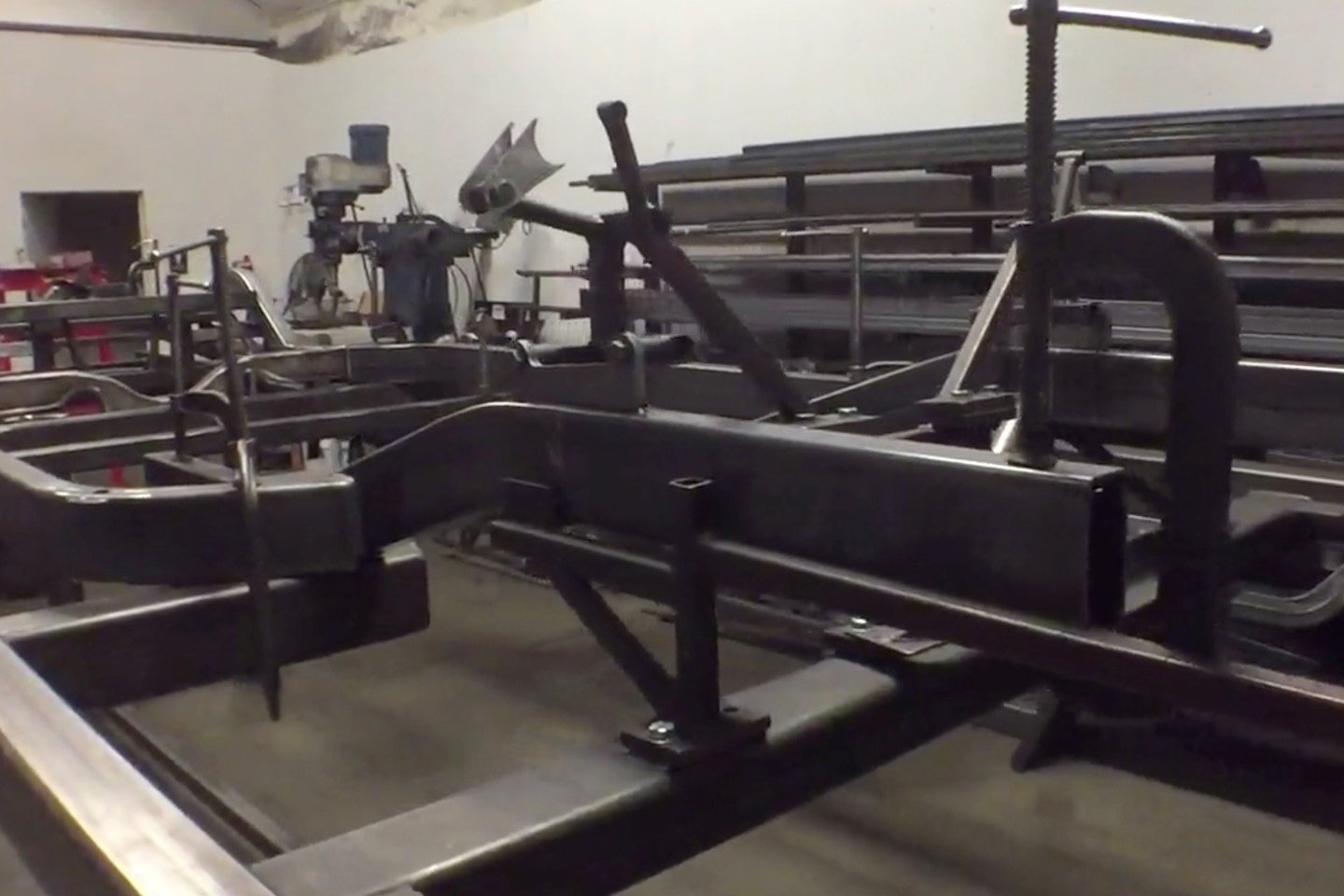If you’ve been following along with our Project Payback 1968 Pontiac GTO Pro-Touring car build, you’ve already seen our plans to swap out the factory chassis with a Schwartz G-Machine chassis from Schwartz Performance. The goal of this project car is to make this once intermediate sedan into a cutting edge Pro Touring machine meant to carve corners and drive anywhere. We wanted a cruiser that could compete in various autocross series, and be a reliable, fun combo for the road course.
Taking this archaic and hefty body-on-frame platform to a level where it could keep up with a modern Corvette is our dream. In order to make that happen, Jeff Schwartz has assured us we needed a chassis that was more rigid and offered suspension controls that operated freely. Having the proper handling geometry with a highly adjustable suspension was also going to help things exponentially.
Given the 1968 Pontiac GTO won the coveted Motor Trend Car of the Year Award in 1968, you may be wondering why we would automatically swap out the entire chassis instead of beefing up the factory version. It’s all about the project budget and how the Schwartz chassis is made. If you doubt the budget justification, please read on!

GM’s A-body platform worked well for a daily driver that was designed to last for about 10-years. However, the pressed steel frame left a lot to be desired when it came to real performance.
Here are The Facts
GM has long operated with a “planned obsolesce” concept dating back to the 1920s. This concept has continued partly due to the rapid change of technology within a shorter period of time, and partly due to profit. Let’s be honest here. How many car companies would still be in business today if they built indestructible automobiles?
If a person only needed to buy one car their entire life, car companies would go out of business, technology would slow down, and our lives would be astonishingly boring. Seriously, if we all drove the same car for our entire life … and it was the exact same type as everyone else … well, you get the picture.
Digging Deeper
Let’s dig into the A-body chassis a little deeper. The A-body platform was very typical of GM’s Body-on-Frame cars built during that period. Body-on-Frame simply means the body of the car (the passenger cabin, engine bay, trunk) is bolted to a flat frame that supports the body along with the suspension and wheels. Many modern vehicles are unibody construction with only trucks and certain larger SUVs still using Body-on-Frame construction.
The Body-on-Frame’s solid foundation was a major help in standing up to twisting forces and hauling families and groceries around. The downside is these chassis were heavier with harsher and less forgiving rides. To combat those issues, these cars were sprung with soft springs, soft shocks, soft rubber bushings to give a more comfortable ride. Great for getting Granny to church, but horrible for performance.
It is also widely accepted the GM A-body came from the dealership with poor front-end geometry. The short spindle may have been fine for daily driving in 1968, but not so much for Pro-Touring in 2021. The short spindle led to poor camber gain from the factory. For anyone not intimately familiar with the term “camber,” it is simply the measurement (in degrees) of the wheel’s vertical center perpendicular to the surface the tire is sitting on. Camber settings are used in performance driving to keep the tire fully planted on the road. Obviously, this helps with tire grip and handling.

The stock front suspension used upper control arms with a long radius drop to a short spindle. There is room for improvement in the steering geometry here.
They Didn’t Know What They Didn’t Know
When it came to automotive engineering in the muscle car era, the factory engineers didn’t know what they didn’t know. Often times they just hung things like heavy brake calipers wherever they could without thinking of weight distribution or anything else for that matter. There was a lot of technology still to come.
This brings us to the Schwartz G-Machine chassis and what we do know now. The team at Schwartz Performance have worked to incorporate modern geometry, up to date materials, the latest suspension components, and brake technology into their bolt-on full-frame designs. Currently, the team has developed chassis for more than 20 models of muscle cars, classics, and trucks built from 1947-1988. They will even build a custom one-off chassis upon request for any chassis, including unibody cars.

A purpose-built chassis and components are made to withstand the forces placed on it by hard cornering and rapid acceleration.
The cost of an aftermarket performance frame can surprise those enthusiasts with less knowledge of chassis rigidity. Even worse, the DIY enthusiasts believe they can take a junkyard frame, repair it, and rebuilt it to the same standards as an aftermarket performance frame. We love the DIY builders, and we are DIY guys, but you simply cannot save money in this process if you rebuild a junkyard frame to the same level as a purpose-built chassis.
Flex. What Is It Good For? Absolutely Nuthin’
The OE A-body frame has several sections that are complicated shapes and difficult to rebuild. The frame itself is a box-type frame made from an inner and outer stamping stitch-welded together. The seam created by putting these two stampings together creates a lap joint that was welded at the factory. The assembly line welding at many of these joints was simply stitched welding with sections of the joints that were not welded.
While a small section of un-welded seam allows just a small amount of flex, when you combine all those small areas the length of the fame, those little amounts of flex add up to a big deal. The proof is in your ears. Once all the seams are welded and the frame is rigid, you’ll notice a lot fewer squeaks and rattles.
This was good enough for basic street driving but not for Pro-Touring or autocrossing. The factory welding technique allowed the frame to flex and robs the car of performance to the ground. It also hampers the suspension from doing its job. So a junkyard frame will need to be stripped of all components, cleaned properly, welded, and boxed before it can even get any real performance upgrades.
In most areas of the country, enthusiasts will be hard-pressed to find a 1968 GTO with a square frame in the wrecking yard. Finding one through Facebook Marketplace, Craigslist, or eBay will end up costing a few bucks. In the absolute best-case scenario, your initial investment will be somewhere over $1,500 and the cost of shipping the frame. Let’s be very generous and round it out to two grand.
In For A Penny, In For A Pound
Once you have the frame, it is worthless to take half-steps. That being said, the next cost will be stripping off all the grime, corrosion, and crud so the frame can be worked on. Sandblasting generally costs $1 – $3 per square foot for light sanding. Companies that charge by the hour will charge between $45 – $65 per hour. Add in material cost ($50 for a bag of abrasive) and the total cost of having a frame sandblasted will come in somewhere near $600.
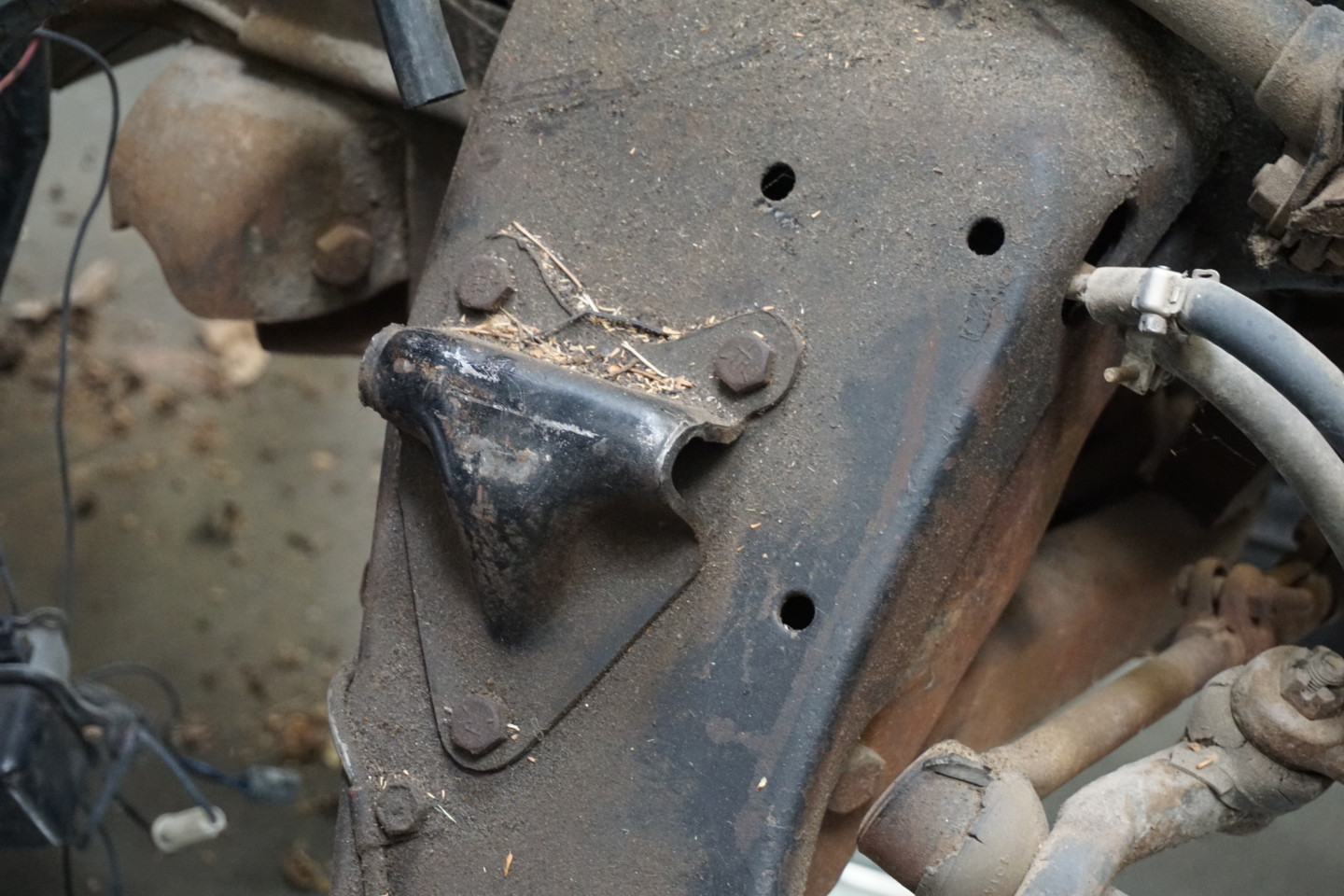
You can work with a crusty old frame, but it will cost you much more in the big picture of things. If you want to do any welding, you’ll have to spot clean (at a bare minimum) the areas that need welds. If you get the entire frame sandblasted, count on a hefty price tag for time and materials.
The next logical step is checking to see if the frame is bent or damaged. Auto body shops use a frame straightening machine to repair damaged car frames. It has a platform with rotatable posts with computerized lasers that assess the frame and damage. The cost to straighten or repair the frame will be based on the amount of work needed.
Simply getting the frame on the jig and braced up so that sections of the frame can be pushed or pulled into the original specifications is time-consuming, let alone doing the actual straightening. If sections need to be replaced or if cross members need to be cut out and re-welded, it can add significantly to the overall cost. In any case, the work of measuring and remeasuring along with manipulating the metal will come to a price tag near $1,000 on a good day. Our total price at this point would be in the neighborhood of $4K – and that is a very conservative estimate.
Strengthening And Welding
Welding rates for professionals go from $65 to $110 per hour, but if you bid the entire job out as a package deal, you may be able to get the entire frame welded for $500 plus materials. Let’s go with another very conservative rate of $800 for the frame welding. We are now nearing the $5K range and we haven’t even talked about bracing, boxing, or supporting the frame with stiffeners.
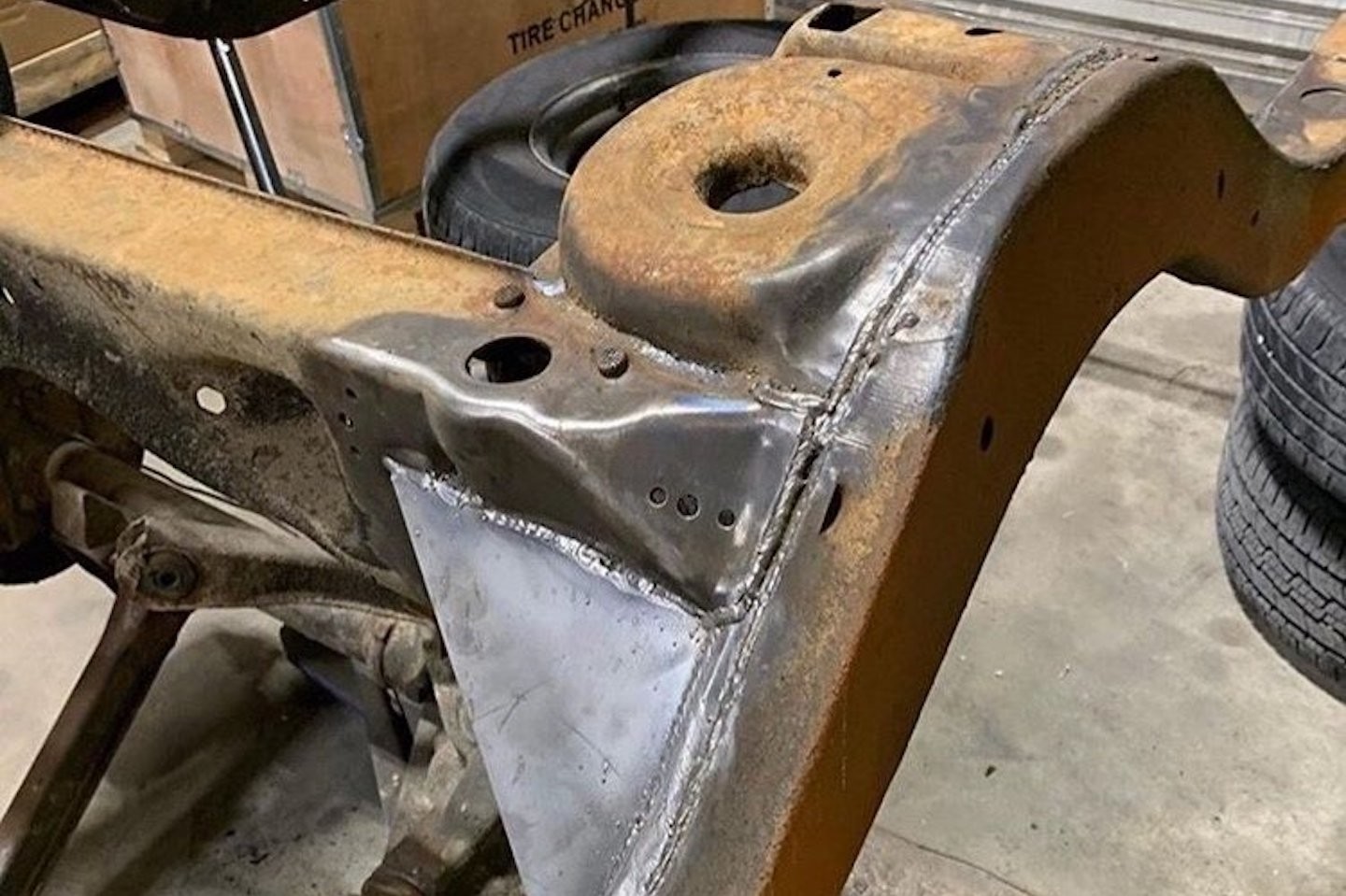
The cost of cleaning, fully welding the seam of a factory frame, and adding supports increase the cost tremendously. The end result is a well-done factory chassis that is still not the caliber of a purpose-built competition chassis for the same cost.
Boxing the open areas of a stamped steel frame will help the rigidity of the frame. Less twisting and flexing, which means more power to the ground. Not to mention, better handling and control. Kits to stiffen an A-body frame can easily run two-to-four thousand dollars or more, depending on the type of kit purchased. By this point, you’ve exceeded the cost of a base Schwartz G-Machine Chassis and it is still just a factory stamped steel frame.
To run larger rear tires (300mm +) for Pro-Touring, you also need to cut/reinforce the rear frame rails, which is costly and time-consuming. ’68-72 GM A-body can fit up to a 275mm rear tire, but the early A-bodies are much worse. Just try autocrossing with a 245mm tire on that big and heavy of a platform.
The Case Is Made
It is impossible to predict what a kit of this type would cost to get the frame to the level of an aftermarket chassis like Schwartz because a stamped steel frame simply cannot achieve the same strength level as a purpose-built competition frame. For reference, the base cost of a Schwartz chassis for this application is just under $10,000. Keep in mind this is simply a reference number. Prices go up and down based on cost or materials like the price of steel tubing. Make sure to call Schwartz Performance and get a quote before ordering.
One of the best features of a Schwartz Chassis is the build. It is manufactured on a precise jig (left photo) so the body mounts will line up perfectly to the frame mounts (right photo). It is a real "bolt-on" assembly in the garage.
It is easy to see that buying a completed competition frame from Schwartz Performance is less expensive in the long run and saves tons of time. One last item to consider in this debate: When is the last time you took on a project and it went without a flaw? No costly mistakes or “do-overs?” That alone is worth the cost of paying for a professionally built chassis. We’ve all seen that project build where the homebuilder had a “buddy” that was a professional welder do the work. Don’t be that guy.
Features Of A Schwartz G-Machine Chassis
The Schwartz G-Machine Chassis – the chassis selected for our project build – is built to fit 1968 through 1972 GM A-body cars. The design of the chassis from Schwartz results in a frame that is 200-percent stiffer while weighing somewhere around 125-pounds less than a stock factory roller.
The chassis we ordered for our project car is a high-performance version made for 1968-1972 GM A-Bodies. This chassis is sent from the factory for use with Chevrolet Chevelles, El Caminos, Pontiac GTO/LeMans/Tempest, Oldsmobile Cutlass, and Buick Skylark and Skylark GS models.
“Our bolt-in design requires no floor cutting or fabrication,” said Jeff Schwartz. “And the rear frame rails are narrowed to accommodate mini tubs. Since our rails are narrowed, a narrower fuel tank is required,” he added. Like any good one-stop-shop, they offer a stainless steel fuel tank that fits the chassis perfectly.
If your wish list includes wider tires, you’re in luck. Wider tires mean more contact patch on the ground and more traction, a perfect combination for a pro-touring car with plenty of power. “All G-Machine Chassis allows for up to 345mm-wide rear tires if you mini tub the wheel wells,” said Schwartz. “Our chassis comes standard with a full-floater rearend. The Moser full-floating 9-inch rearend is narrower than stock rearend to allow for a deeper dish on the rear wheels.” This offers the optimal wheel offset for wider tires.
A Walk Around Our G-Machine Chassis
We asked Jeff Schwartz to point out some of the features of our new G-Machine chassis and he gladly obliged. “Starting at the front end, we use needle bearings in the upper control arms along with thrust bearings. This dramatically reduces the friction and allows free movement for better ride quality.”
“Notice the long Ridetech coilovers. These are 16 and a half inches long with 5.2 inches of travel,” he said, adding “The longest in the industry. This, along with the low-friction components give a smooth ride.”
When it came to the suspension works, Schwartz pointed out the high-performance components. “We have a race-style sway bar that is comprised of a nylon bushing inside a chassis tube held on with our billet aluminum sway bar arm. This also moves very freely and doesn’t bind. In addition to the smooth ride, this helps with the handling and stance that you would like a typical pro-touring type build.” At this stage of the game, everyone knows that stance is important for more than looks.
Getting To The Nitty Gritty
“The power steering rack is standard equipment, and we have separate adjustments for caster and camber for alignment.” In addition to the handling adjustments, Schwartz pointed out another added feature. “The hubs can also be moved forward and back in the wheel well to allow the tires to be centered in the wheel opening. Many cars from the factory were not centered.”
Our car was getting an LT4 wet-sump engine so Schwartz made accommodations for that in the chassis. He also added engine mount plates that would allow the engine position to be adjusted fore and aft as needed.
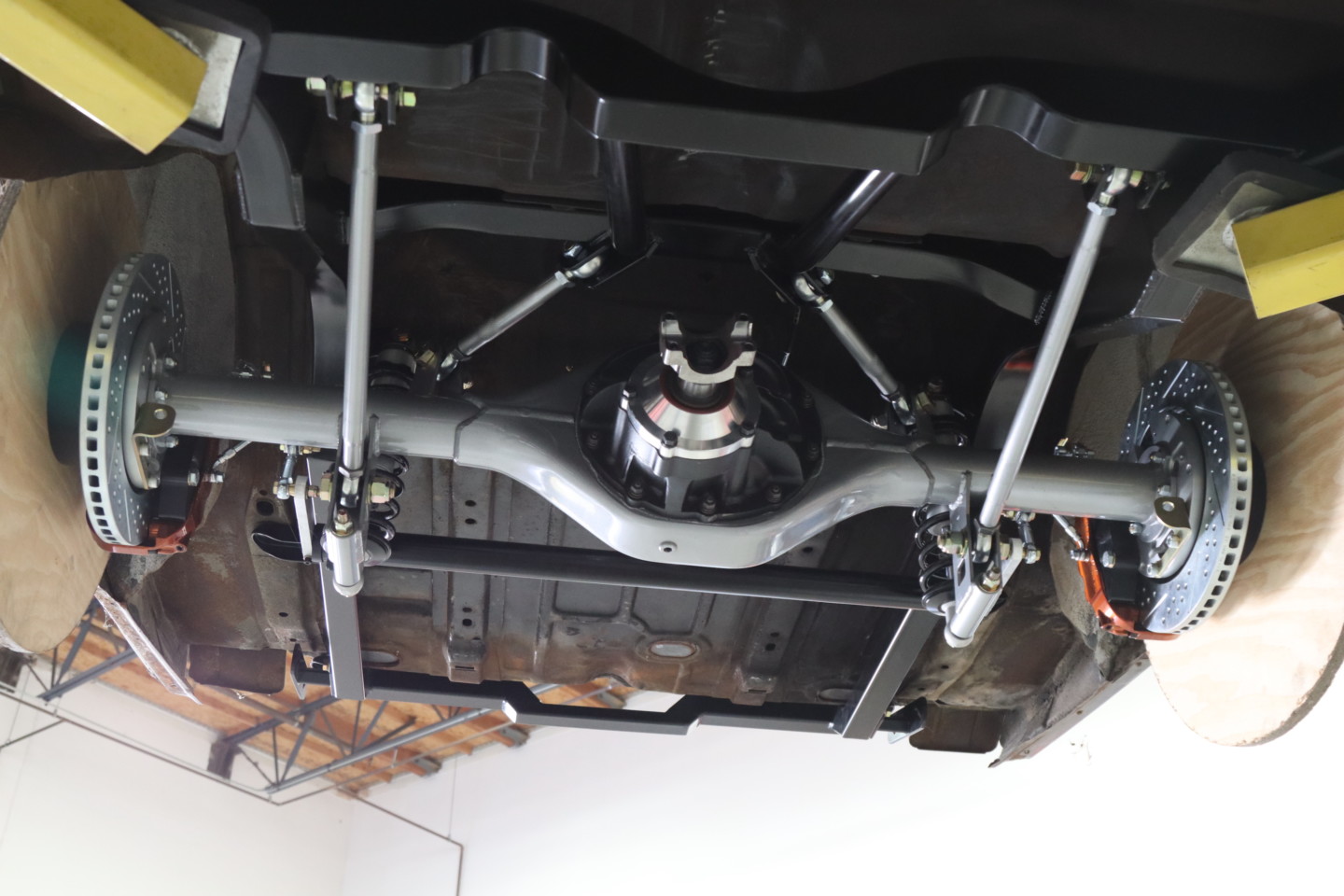
The G-Machine chassis has slightly narrower frame rails which allow for wider tires. The triangulated four-link suspension is perfect for pro-touring and performance driving.
“The rear suspension is a triangulated four-link with Teflon-lined spherical rod ends, again this is for a bind-free operation. It allows for the rearend to articulate when you hit bumps.”
Much like the front suspension, the rear sway bar is a performance component. “The rear sway bar tube is behind the rearend, with a nylon bushing with billet aluminum sway bar arm. We use Teflon-lined Heim joints. This is the ultimate in handling,” Schwartz said with pride.
Stay Tuned
Now that our project has a solid foundation to work from, we will be adding more goodies and eventually get to the track to do some testing. Until then, please take a look at the project upgrades for Project Payback. To find out more about Schwartz Performance and their line of upgraded chassis, visit them online at www.schwartzperformance.com.


